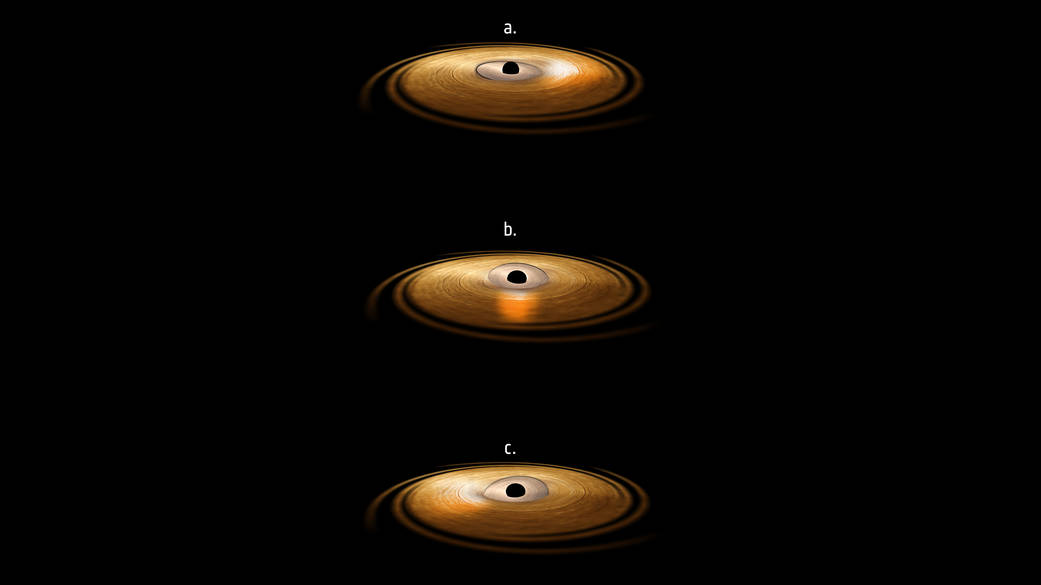Mystery Solved: Black Holes Twist Space-Time Like Taffy

A 30-year-old mystery about black holes has just been solved.
The story starts in the 1980s, when astronomers found that small (stellar-mass) black holes emit X-ray light that flickers in a curious pattern. At first, this flickering occurs every few seconds; however, the time between each flicker shortens over the course of a few months, eventually stopping completely.
This "quasi-periodic oscillation" (QPO) was thought to be a result of a phenomenon predicted by Albert Einstein's theory of general relativity — that any object with enough mass, like a black hole, will twist space-time as it spins. Later, scientists calculated that these gravitational vortices will cause the orbits of particles around the black hole to change orientation, leading to the QPO phenomenon. [Images: Black Holes of the Universe]
"It is a bit like twisting a spoon in honey: Imagine that the honey is space, and anything embedded in the honey will be 'dragged' around by the twisting spoon," Adam Ingram, lead author of a new study describing the findings, said in a statement. "In reality, this means that anything orbiting a spinning object will have its motion affected," added Ingram, of the University of Amsterdam in the Netherlands.
Though the observed QPO periods were close to those predicted by this idea, there had not been enough evidence to nail down the connection — until now.
Observations by the European Space Agency's XMM-Newton spacecraft and NASA's Nuclear Spectroscopic Telescope Array (NuSTAR) satellite show that matter orbiting close to a black hole moves in paths that wobble in a characteristic way — one that reveals the gravity-twisting behavior of black holes, the researchers said.
The two satellites observed the X-ray light emitted by iron atoms in one black hole's accretion disk — the flat collection of dust and gas spiraling into the object. The accretion disk is receding on one side and approaching on the other, relative to the spacecraft; the light emitted is therefore shifted toward the blue end of the spectrum on the approaching side, and red-shifted on the other. (This is similar to the way sound waves emitted by an ambulance's siren are shifted as the vehicle approaches and then passes an observer.)
Breaking space news, the latest updates on rocket launches, skywatching events and more!
These shifts revealed the twisting motion of the accretion disk, which was caused by the black hole's powerful gravity, the researchers said.
"We have spent a lot of time trying to find smoking-gun evidence for this behavior," Ingram said.
The new study was published in May in the Monthly Notices of the Royal Astronomical Society.
You can follow Space.com on Twitter @Spacedotcom. We're also on Facebook & Google+. Originally published on Space.com.

Jesse Emspak is a freelance journalist who has contributed to several publications, including Space.com, Scientific American, New Scientist, Smithsonian.com and Undark. He focuses on physics and cool technologies but has been known to write about the odder stories of human health and science as it relates to culture. Jesse has a Master of Arts from the University of California, Berkeley School of Journalism, and a Bachelor of Arts from the University of Rochester. Jesse spent years covering finance and cut his teeth at local newspapers, working local politics and police beats. Jesse likes to stay active and holds a fourth degree black belt in Karate, which just means he now knows how much he has to learn and the importance of good teaching.

